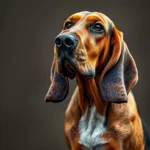
Introduction
Dog breeds play a significant role in our lives, influencing our choice of pet based on traits like size, temperament, and energy levels. Understanding specific breeds allows potential owners to make informed decisions about which dog fits their lifestyle. Among the many breeds, the Alaskan Husky stands out due to its unique characteristics and rich historical context. This article aims to provide comprehensive information about the Alaskan Husky, including its origins, care needs, health considerations, and how it compares to other breeds.
Understanding Dog Breeds
Definition of Dog Breeds
A dog breed is a specific group of domestic dogs that share common characteristics, such as appearance and behavior, due to selective breeding. Understanding breed characteristics is crucial as it helps potential owners choose a dog that matches their lifestyle and preferences.
Overview of Popular Dog Breeds
While the Alaskan Husky is a remarkable breed, there are many other popular breeds, such as the Labrador Retriever, German Shepherd, and Golden Retriever. Each breed has distinct traits that cater to different lifestyles and needs. When selecting a breed, it’s essential to consider factors such as living environment, activity level, and family dynamics.
The Alaskan Husky: An Overview
History and Origins
The Alaskan Husky has a storied history rooted in the Arctic regions, developed primarily for sled pulling and transportation. Indigenous peoples of Alaska initially bred these dogs for their strength, endurance, and ability to thrive in harsh conditions. The breed became pivotal in sled dog racing, especially during events like the Iditarod, where their speed and stamina are showcased.
Physical Characteristics
The Alaskan Husky is a medium to large-sized dog, with a weight range between 40 to 60 pounds. Their height typically varies from 20 to 25 inches at the shoulder. The coat is double-layered, providing insulation against cold weather, and comes in various colors, including black, gray, red, and even white. Distinctive features include erect triangular ears, expressive almond-shaped eyes, and a bushy tail that often curls over the back.
Temperament and Behavior
Known for their friendly and outgoing personalities, Alaskan Huskies are social dogs that thrive on human interaction. They are intelligent, independent, and possess a high energy level, requiring regular exercise to keep them mentally and physically stimulated. Early socialization is vital to help them develop into well-rounded companions, as they can exhibit strong prey drives and may be less tolerant of small animals.
Alaskan Husky Care and Management
Dietary Needs
Proper nutrition is essential for the health and well-being of an Alaskan Husky. A high-quality diet rich in protein and healthy fats is recommended, especially for active dogs. Keep an eye out for common health concerns related to diet, such as obesity and food allergies, by monitoring their weight and adjusting portions accordingly.
Grooming Requirements
The grooming needs of an Alaskan Husky can be substantial, especially during shedding seasons, which occur twice a year. Regular brushing is essential to manage loose fur and prevent matting. Bathing should be done as needed, but not too frequently, as it can strip their coat of natural oils. A good grooming routine can keep your dog comfortable and looking its best.
Training and Socialization
Training is particularly important for the Alaskan Husky due to their intelligence and independent nature. Positive reinforcement techniques work best, as these dogs respond well to rewards and praise. Socialization should begin at an early age, exposing them to various people, environments, and experiences to foster a well-adjusted adult dog.
Health Considerations
Common Health Issues
Like all breeds, Alaskan Huskies can be prone to certain genetic health issues, including hip dysplasia, eye conditions such as progressive retinal atrophy, and skin allergies. Regular veterinary check-ups and preventative care are crucial to maintaining their health and catching any potential issues early.
Lifespan and Aging
The average lifespan of an Alaskan Husky ranges from 10 to 15 years, depending on genetics and care. As they age, it’s essential to adapt their diet, exercise routine, and veterinary care to meet their changing needs. Geriatric care tips include providing joint supplements, monitoring weight closely, and ensuring they have a comfortable place to rest.
Comparing Alaskan Husky with Other Breeds
Similar Breeds
When comparing the Alaskan Husky with other sled dog breeds, such as the Siberian Husky and the Alaskan Malamute, some similarities and differences become apparent. All three breeds are strong, energetic, and excel in cold climates. However, the Alaskan Husky tends to be more variable in appearance due to its mixed breeding background, while the Siberian Husky is more standardized in appearance. The Alaskan Malamute is larger and stronger, primarily bred for hauling heavy loads rather than racing.
Ideal Owner Profile
Owning an Alaskan Husky is best suited for individuals or families with an active lifestyle. These dogs require significant physical and mental stimulation, making them ideal for owners who enjoy outdoor activities like hiking, running, or dog sports. Additionally, they thrive in environments where they can socialize with other dogs and people.
Alaskan Husky in Popular Culture
Media Representation
The Alaskan Husky has made numerous appearances in movies, TV shows, and literature, often depicted as loyal and courageous companions. Films like “Eight Below” and “Balto” have highlighted their role as sled dogs, contributing to the breed’s popularity and recognition. Such media representations have romanticized the breed, attracting potential owners who admire their beauty and strength.
Community and Events
Various community events celebrate the Alaskan Husky, including dog shows, races, and festivals dedicated to sled dog culture. These events not only showcase the breed’s athleticism and beauty but also foster a sense of community among enthusiasts. Breed clubs and organizations play a vital role in promoting responsible ownership and preserving the breed’s heritage.
Conclusion
The Alaskan Husky is a fascinating breed with a rich history, unique characteristics, and a variety of care needs. Understanding their origins, physical traits, temperament, and health considerations is essential for anyone considering bringing one of these remarkable dogs into their home. Their high energy levels and social nature make them wonderful companions for active owners who can provide the exercise and stimulation they require. As with any breed, responsible ownership and thorough research are key to ensuring a fulfilling relationship with your Alaskan Husky.
By exploring the unique aspects of the Alaskan Husky and considering the breed’s requirements, potential owners can make informed decisions that lead to a happy and healthy partnership with their furry friend.









